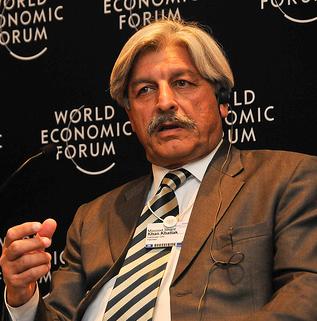The strategic conflict between Russia and the British Empire for the supremacy over Central Asia came to be known as the Great Game. The 1813 Russo-Persian Treaty triggered the Great Game, which ended in 1907 through the Anglo-Russian Convention. During the Great Game the Pakhtuns found themselves sandwiched between the two superpowers of that time flexing their muscles for more strategic gains and were thus forced into a situation which saw many battles fought on their lands.
The First Afghan War began in 1838 when Lord Auckland, the governor general of India, thought that India’s North-West Frontier must be protected by having a friendly Afghanistan. By 1839 the British succeeded in re-imposing upon the Afghan people a deposed and disliked ruler who was kept in power by ten thousand British troops barracked in Kabul. However, by 1842 the British had to evacuate from Kabul as a result of several setbacks. Thus, the first British effort aimed at eventually annexing Afghanistan failed miserably but, by then, the Pakhtun belt had been subjected to years of fighting.
The Second Afghan War came about when Russia, after ending its tensions with the British Empire in Europe through the Berlin Congress of 1878 turned its attention once again to spreading its influence in Central Asia. A Russian diplomatic mission succeeded in making its way to Kabul in the summers of 1878. This prompted the British to ask Kabul to also allow the British Empire to establish a mission in Kabul, which was declined. This prompted the British to invade Afghanistan and converge on Kabul through Kandahar, Peiwar Kotal (near Parachinar) and the Khyber Pass. Kabul was captured and a government suited to the British was established. All of it happened after the Pakhtun belt had once again been subjected to miseries and fighting.
Afghanistan continues to attract the attention of world powers. The Soviet occupation of Afghanistan in 1979 and the ongoing US occupation of Afghanistan are two examples. All of it has been retrogressive for Pakistan and Afghanistan and, more than anyone else, for the Pakhtuns of these countries.
The Soviet invasion of 1979 and eight years of occupation cost the Afghans one million killed and millions disabled. Five million Afghans became refugees. Urban and rural Afghanistan lay in ruins. Most of these casualties and displacements were amongst the Pakhtuns of Afghanistan because somehow all military actions and invasions of Afghanistan end up in extensive fighting in the Pakhtun belt. Even today, the end result of the ongoing US-led occupation of Afghanistan is that the Pakhtuns have been entirely engulfed by the viciousness and miseries of the overall situation.
The purpose of narrating this history is to show how the people of Afghanistan have suffered endlessly and, more so, the Pakhtuns, because the geographical belt that is home to Pakhtuns in both Afghanistan and Pakistan has over the centuries figured vitally in the strategic rivalries between the regional and superpowers of all eras.
In all fairness, it is now time for the world to pay back the Pakhtuns for their sufferings over the centuries. There is now a need to develop the Pakhtun belt at a super-fast pace. There is also a need for the Pakhtuns to reorient themselves to the political realities of the present and the future and look for a progressive leadership that has a vision. The Pakhtuns have always been taken for a ride by their own self-serving leadership. On its part, Pakistan should be proud of the unflinching patriotism of the Pakhtuns which they have displayed endlessly and are still doing so during the ongoing crisis. Tin-pot strategists coming up with lop sided theories which are sugar-coated with high-sounding terms, like “strategic depth,” have caused Pakistan and the Pakhtuns immense harm.
The Pakhtuns now deserve to have concessional industrial estates, top-grade schooling, recognised universities, motorways, expressways, hospitals and other basic amenities. It is time to take the digging tools away from the hands of the handsome and robust Pakhtun youth and replace them with lap top computers.
The Pakhtun, who is basically peaceful, enterprising, hardworking, honest, honourable and self-respecting, now needs to be rehabilitated after centuries of wars and destruction. The Pakhtun youth yearns for an opportunity to shape himself into an educated and progressive person. Pakistan, and the world at large, needs to hear these words with a lot of care. It is payback time. Whatever it takes in terms of money it will still cost far less to develop the Pakhtun areas of Afghanistan and Pakistan than what the war effort is costing. It is time to change course from destruction to construction in the Pakhtun areas. They have lost generations to war. They now deserve the world’s magnanimity for the development of their areas as a matter of right after having been exposed to wars and destruction coming out of the strategic interests of the regional and superpowers of almost every era. The miseries of the Pakhtuns must now be converted into happiness brought about through prosperity.
http://thenews.com.pk/daily_detail.asp?id=192564
